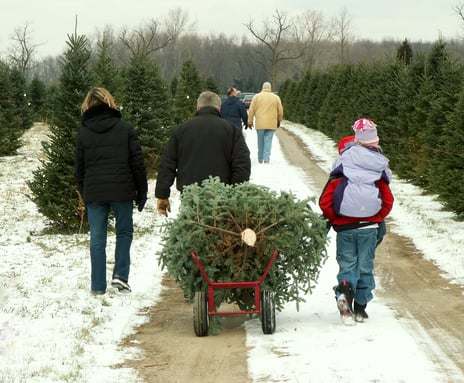When it comes to the holiday season many of us have traditions we use to celebrate that we hold near and dear to our hearts. There are many holidays and traditions during the winter and they range from the common to the more personal. One of the most notable practices is the tradition of the Christmas tree. Millions of people every year erect and skillfully decorate the conifer in their homes to help kick off the holiday season. Whether it is plastic or pine, the green bushy tree it is hard to picture the holidays without it, but how did such a tradition start?
The first recorded appearance of the Christmas tree dates back to 16th century Germany when Christians would bring trees into their home. Martin Luther is credited as the first person to add decorations to the tree; adding lights after being inspired by the stars that shone above the evergreens. The first American Christmas tree to be displayed dates back to the 1830s when German settlers in Pennsylvania placed one as a community tree. This tradition was originally not well accepted by the earlier and more devout settlers. Many had seen the display as a pagan mockery of the extremely religious holiday. In Massachusetts, it was even illegal to have decorations up for the holiday. It was not until Queen Victoria and her family were illustrated around a Christmas tree in 1848 that the tree started to become more popularized in the United States. The tree has now grown to become a staple of the holiday season. According to the National Christmas Tree Association, 25 to 30 million trees are sold each year.
 You can obtain a real tree from a farm or forest.
You can obtain a real tree from a farm or forest.After you acquire the necessary permits it is important to follow all of the Forest Service rules and regulations. For example, the Colorado Blue Spruces is off limits when it comes to the Christmas tree permit and Wilderness areas are out of bounds. Once you find and chop down the perfect tree just attach the permit to the base and transport it for decoration and celebration. In the end, holidays are a wonderful time to spend with family and friends and are filled with rich traditions from many cultures. Whether you decide to bring a tree inside this winter or celebrate in other ways we wish you a happy holiday season!
Charlie Brockman is a naturalist at Walking Mountain Science Center. You can find him hanging out by an alpine lake or hiking through nature searching for wildlife.









